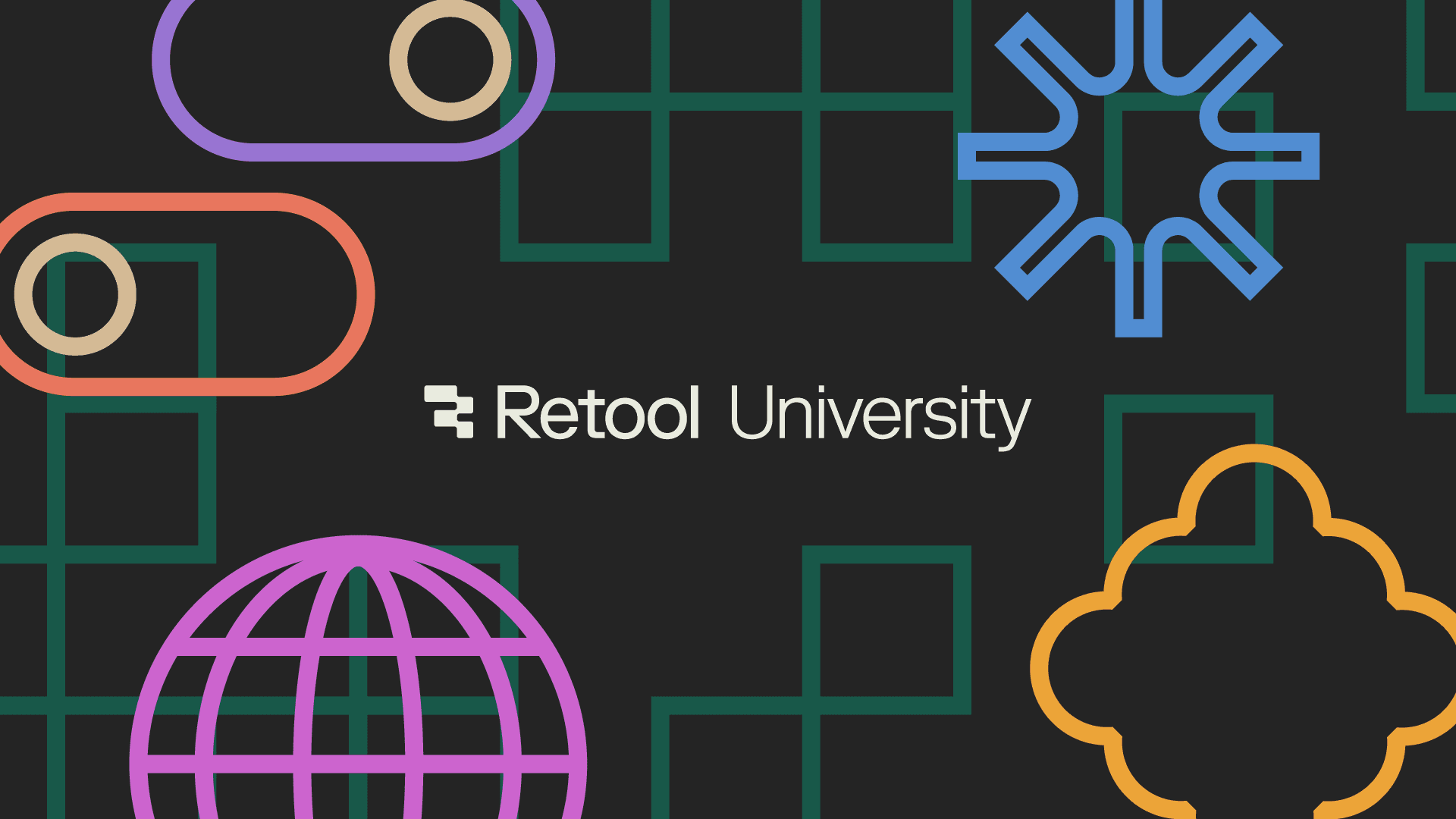We know you’re busy, so we’ve rounded up the latest on all Retool updates and events, plus tips to help you get the most out of your account. Read on to find out what’s new in Retool 3.75+, how to upskill with Retool University, and more.
Now anyone can start building better apps quickly. With free courses, curated learning paths, labs, and videos, Retool University lets you build a curriculum that’s relevant to your company and goals. Our announcement post has everything you need to start your learning journey.
We knew finding an out-of-the-box learning platform with all of the capabilities we wanted would be difficult, so we created our own. Learn more about how we used our own solution to bring our vision for a custom developer learning platform to life.

We’ve been reimagining how we present Retool to the world, and earlier in September we were finally able to share it with you.
Retool aims to provide developers the building blocks to more quickly, easily, and intuitively build good software. We believe that a future with more software, and, importantly, better software, leads to progress on myriad scales and stands to benefit everyone.
Our new brand represents this way of thinking, and you can read more about it in our ode to good software.

Retool 3.75+ ushered in big improvements to your entire app-building experience, like multipage apps, custom component libraries (now GA!), Stacks layout, multiplayer collaboration mode, and the new Timeline component. Check out the highlights in the recap of Retool Developer Day Q3, or catch up with the recording on YouTube (and stick around for a sneak peek of the all-new User Tasks in Retool Workflows).

Now, you can connect a custom AI provider in Retool to integrate your preferred third-party AI services, use custom language models, and meet stringent security and compliance requirements through your own proxies. This feature supports various AI provider schemas, allowing you to choose and implement AI solutions for your specific needs and preferences. Learn how to connect your own custom AI provider here.

- Comment Thread component: Users can post comments and start discussions directly within your apps. Retool automatically handles comment storage and retrieval so no data source is needed.
- Subfolders (GA): Subfolders helps you manage and organize your Retool apps, workflows, and resources, and is now available to all users on Retool Cloud and Retool Self-hosted versions 3.93 and later.
- Dynamic queries: Enable a single query to access multiple resources of the same type, reducing the need for duplicate code.
- New and improved Scanner component: Use scan events to reference scanned items and the time between scans, detect duplicates, programmatically pause or set time between scans, and more.
Dr. Peter McCaffrey, UTMB’s Director of Pathology Informatics and Chief AI Officer, built and deployed an AI app that 10x’ed the number of cases they were able to review in just a few weeks. You can read about it in the blog post here, and join us on October 16 to see how UTMB did it. Register here.
We’ll explore how to incorporate AI into the internal tools and workflows that power your organization’s operations. Register now for the webinar with InfoQ.
Build your first app with a Retool expert—sessions are every Thursday at 9am PT. RSVP here!
If you’re attending NoCode Summit in Paris, October 16–17, find us at Booth B12. We’ll also be at Gartner IT Symposium Xpo in Orlando October 21–24—swing by Booth #630 to chat with our team about what’s new at Retool.
Now you can use Retool while browsing the web, thanks to khill-fbmc’s Google Chrome extension. App Embedder for Retool lets you view your Retool app in a side panel while browsing. Happy multitasking!

Our community highly encouraged this project, knowing it could power so many use cases. We’re proud to have Kevin breaking new ground in building something for everyone.
Did you know our community has monthly challenges? August’s challenge was Olympic-themed, with podium medalists recognized in various “events” across the community. September’s challenge ends on October 4, but October’s won’t be far behind.
Productivity metrics for dev teams have gotten a lot of airtime in the year since McKinsey waded into the engineering productivity debate. In the first part of our developer productivity series we explore how to think about measuring productivity holistically, then in part two, we offer some practical ways to uncover bottlenecks and roll out meaningful changes (without ruffling everyone’s feathers).
That’s it for September—see you next month!
Did you know we have a newsletter? Subscribe to The Mallet to get monthly Retool updates delivered directly to your inbox.
Reader



